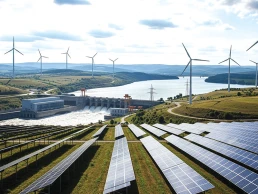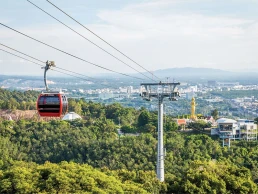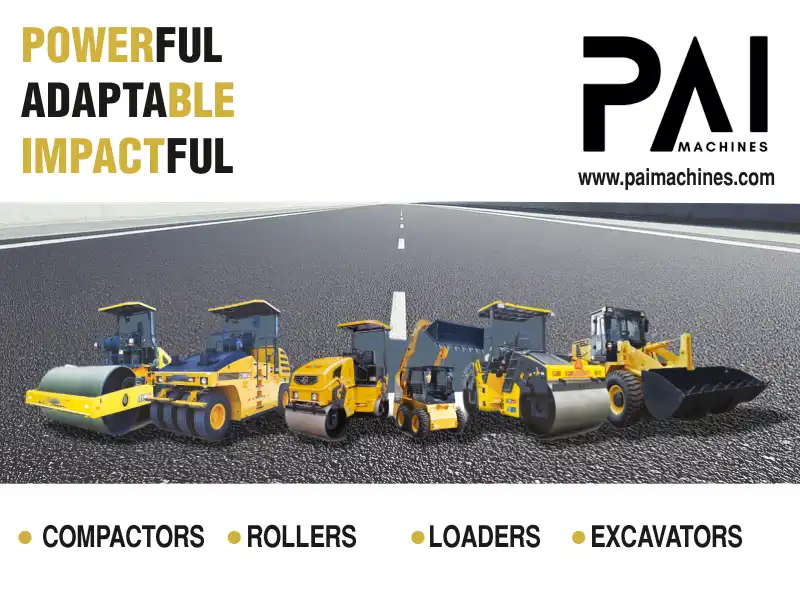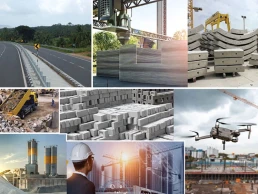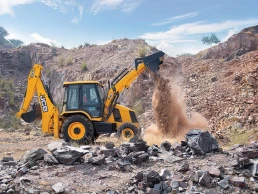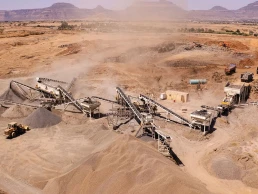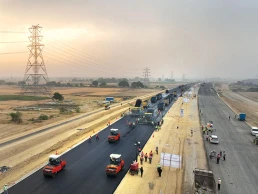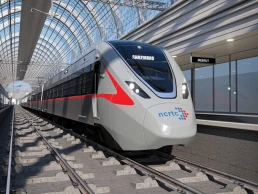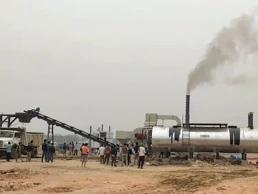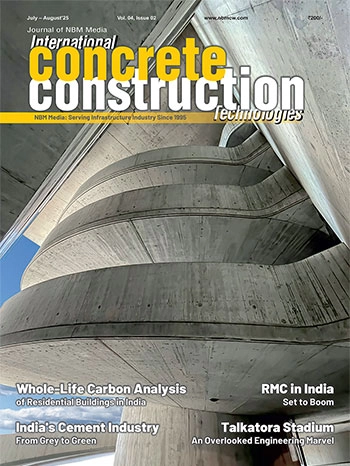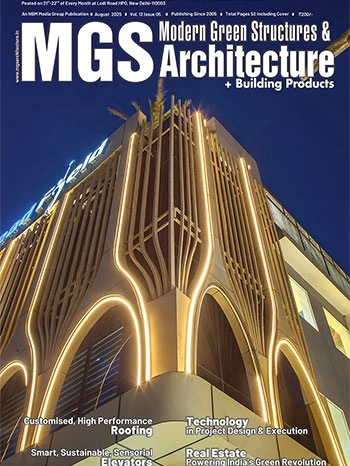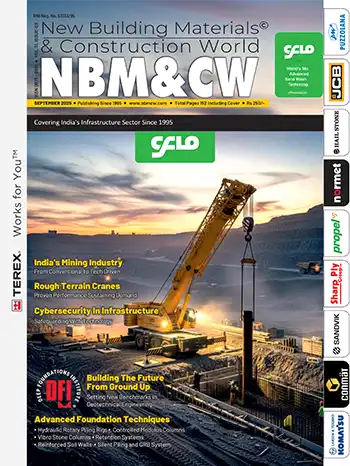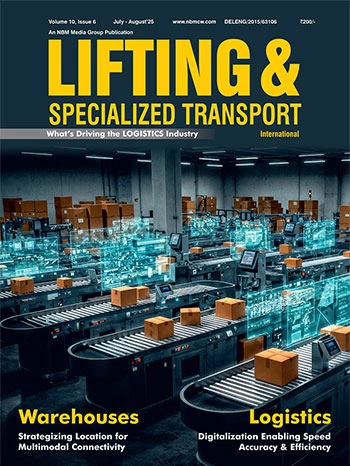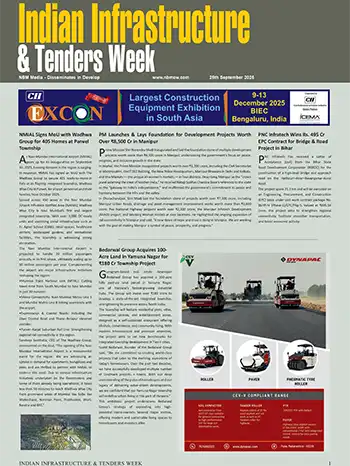PSI Bringing Standardization in India’s Construction Industry with Precast & PEBs
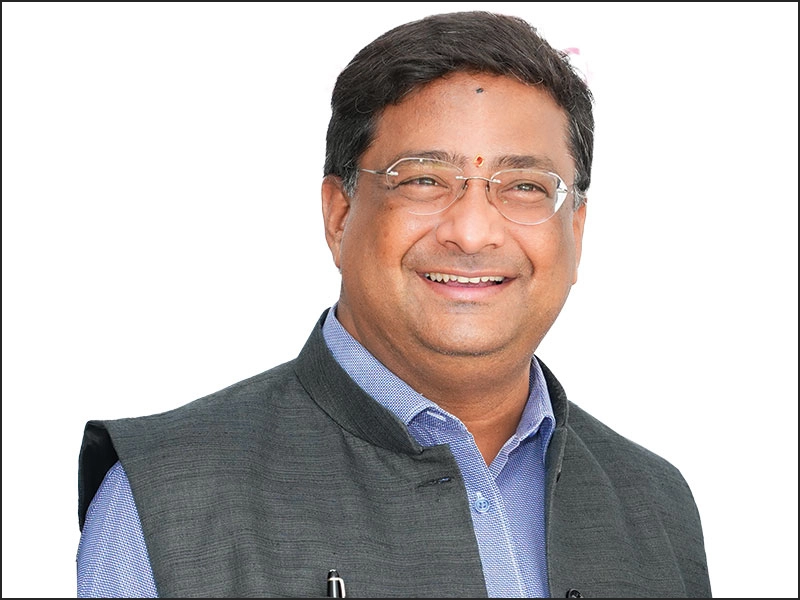
Rajkumar Kacharla, newly elected President of the Pre-Engineered Structures Society of India (PSI) and Director, Dhrumataru Consultant, is on a mission to transform the construction landscape. With a strong foundation in civil engineering and leadership roles across key industry bodies like ACCE, CEAI, and other professional organizations, he brings a holistic perspective on quality, sustainability, and standardization. In this exclusive interview with Maria R, he shares his vision for mainstreaming PEBs, precast and prestressed concrete technologies, strengthening industry collaboration, and raising the bar for infrastructure delivery in India.
Congratulations on becoming the President of PSI. What are your key objectives in this leadership role, and how do you plan to enhance the adoption and standardization of precast and prestressed concrete in India’s infrastructure
Thank you. Taking on this leadership role at PSI is both an honor and a responsibility. My vision is to strengthen the role of precast, prestressed concrete, and pre-engineered structures in India's infrastructure growth by driving standardization, promoting innovation, and building industry-wide capacity.
As the President of PSI, my key objectives are to:
- Develop and implement standardized designs, codes, manuals and practices for precast, prestressed concrete and pre-engineered structures to ensure consistency and quality across projects.
- Increase the adoption of precast, prestressed concrete, pre- engineered structures in India's infrastructure by highlighting its benefits, such as speed, cost efficiency and sustainability.
- Encourage research and development in pre-engineered structure (steel and concrete), precast and prestressed concrete technologies to improve product quality, efficiency, and sustainability.
- Foster collaboration among industry stakeholders, government agencies, and research institutions to drive growth and innovation in the PEB, Precast and Prestressed concrete sector.
To achieve these objectives, I will:
Collaborate with experts to develop and update industry guidelines, codes and standards, manuals, SOPs, and certification programs for manufacturers, professionals and workers involved in construction of PEB, precast and prestressed concrete structures.
Help organize training programs, workshops, and conferences to enhance the skills and knowledge of professionals and workers in this industry.
Engage with government agencies, policymakers, and industry stakeholders to promote the benefits and potential of PEB, precast and prestressed concrete in India's infrastructure development.
Encourage the stakeholders to join hands to establish or to set up centres of excellence at various parts of the country with ICSR-led construction industry-related institutions and with institutes of national importance like the IITs and NITs, etc.
With these objectives in mind, my team and I aim to contribute to the growth and development of the PEB, precast and prestressed concrete industry in India, ultimately enhancing the quality and sustainability of the country's infrastructure with circular economy.
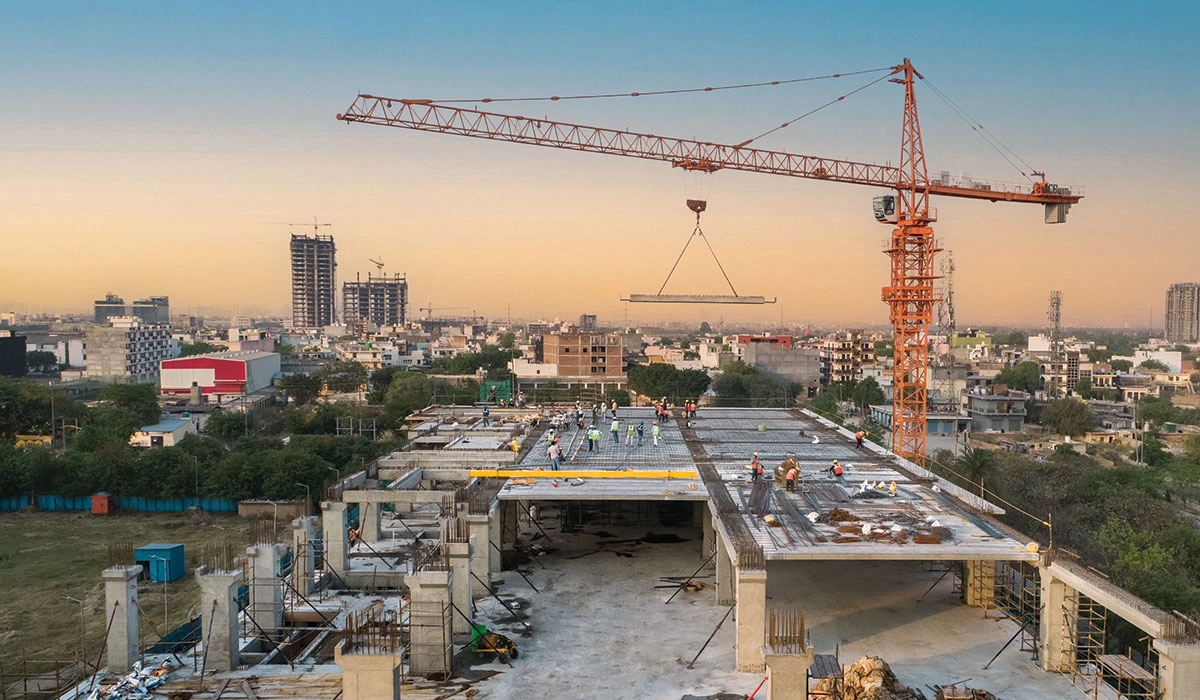
How do you assess India’s PEB, precast and prestressed concrete industry in terms of technology maturity, execution practices, and quality benchmarks vis-à-vis global markets?
Over the past decade, India’s PEB, precast, and prestressed concrete industry has come a long way. We’ve seen encouraging adoption of technologies like automation, digital tools, and modular systems. However, when compared to more mature global markets, there’s still room to grow particularly in terms of innovation and R&D. Collaboration with international experts and exposure to global trends can help accelerate this progress.
On the execution side, we are improving steadily, but project management and on-site coordination still need strengthening. Efficient supply chains are critical to precast success, and Indian firms can benefit from adopting global best practices in this area.
As for quality, while most companies have established quality control systems, the consistency in enforcement is where we often fall short. Promoting certification and international accreditation will go a long way in helping Indian products meet global benchmarks and also boost buyer confidence.
In short, we’re moving in the right direction, but there’s still significant potential to grow by focusing on innovation, execution excellence, and stringent quality assurance.
While metros, highways, urban housing, industrial developments, and data centers are the current demand drivers and high-growth sectors for PEB and precast industry in India, do you foresee any other emerging or niche application areas gaining traction?
The current demand for PEB and precast concrete systems in India is being driven by several key macroeconomic and sectoral trends. Industrial and infrastructure development, bolstered by initiatives like Make in India, Smart Cities Mission, and Atmanirbhar Bharat, is driving demand for PEBs in factories, warehouses, and logistics hubs. Simultaneously, rapid urbanization and the scale of ongoing mega-infrastructure projects are fueling the adoption of precast concrete in metro rail corridors, flyovers, bridges, and large-scale housing schemes. These technologies are gaining ground not only because of their structural versatility but also because they offer substantial cost savings and reduced project timelines critical for high-volume urban and industrial development.
High-growth sectors that are currently embracing PEB and precast systems include manufacturing units, food processing and cold storage facilities, and high-throughput assembly plants. The logistics and warehousing segments are other major drivers, especially with the exponential rise of e-commerce and the need for large fulfillment centers across Tier I and Tier II cities.
Urban infrastructure and affordable housing are also emerging as major consumers of precast technology, given their demand for speed, repeatability, and structural quality. While not yet dominant, the digital infrastructure sector, particularly data centers, is expected to increasingly leverage PEB and precast components for fast deployment and structural reliability.
Several niche and emerging applications are also beginning to gain traction. Hybrid and composite PEB structures that integrate steel frames with glass, concrete, or aluminium facades are now being used for airports, metro stations, malls, and commercial complexes. Modular construction is another promising frontier, with prefabricated classrooms, clinics, and labs growing in relevance, especially in remote and rapidly urbanizing regions.
The industry is also witnessing rising demand for eco-conscious and sustainable construction methods, making PEB and precast technologies attractive options for green infrastructure initiatives.
India’s engineers must think beyond construction – we must build with ethics, sustainability, and a “nation-first” mindset at the core.
With MoRTH’s recent mandate requiring the use of precast components in all National Highway projects above ₹300 crore, what impact can this have on the precast industry? How should stakeholders prepare to scale capacity and meet tighter execution timelines?
This policy shift is likely to create a surge in demand for precast structures, presenting new growth avenues for manufacturers and suppliers across the country. It may also serve as a catalyst for standardization, driving the industry toward more consistent quality control practices and adherence to uniform specifications. As demand rises, companies will be compelled to invest in advanced technologies, automated production systems, and modern manufacturing infrastructure to scale efficiently and ensure consistent quality.
To meet the execution timelines associated with large infrastructure projects, stakeholders will need to scale up their capacity. This includes not only expanding manufacturing capabilities but also streamlining production workflows to improve speed and efficiency. Training the workforce both in plant operations and on-site installation is essential to support the technical sophistication required for high-volume, time-bound delivery. In parallel, strengthening supply chain management will be critical to avoid delays in raw material procurement and logistics.
Moreover, rigorous quality control systems must be embedded at every stage of production and deployment to maintain structural integrity and safety standards. By investing in process optimization, automation, and human capital, stakeholders can align themselves with the demands of this mandate and contribute meaningfully to India’s growing infrastructure ecosystem.
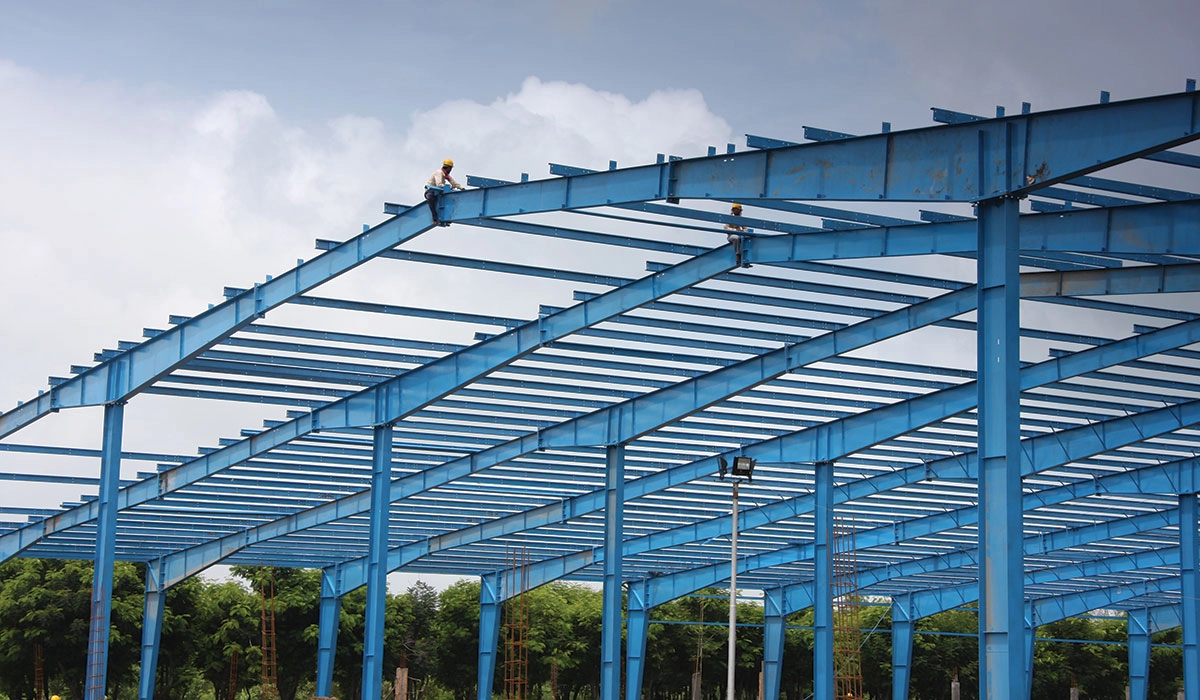
India still lags behind in mechanized construction and modularization, despite the advantages of speed, cost efficiency, and safety. What key technical or execution challenges continue to hinder the wider adoption of precast systems, especially in public infrastructure projects?
Despite growing recognition of the benefits offered by precast and modular construction, India's infrastructure sector has been slow to adopt these technologies at scale. Several technical and execution-related hurdles continue to restrict widespread implementation, particularly in public sector projects, where legacy processes, regulatory gaps, and logistical limitations pose significant constraints.
From a technical standpoint, there are multiple issues: one is the limited expertise in designing precast structures and systems, which can make it difficult to adopt precast solutions. Another is ensuring consistent quality of materials and the standardization of precast components, which can be a challenge. Additionally, transportation and logistics of precast components can be complex and often require specialized equipment.
Then there are execution challenges: Inadequate project planning and management can lead to delays and cost overruns. There’s also a shortage of skilled labor trained in precast construction techniques, which can hinder adoption. And in many cases, ensuring proper site preparation and logistics becomes a challenge especially in urban areas where space and access are constrained.
When it comes to public infrastructure projects specifically, there are added layers of difficulty. Existing regulatory frameworks may not be conducive to precast construction, which means there’s a need for updates and revisions. Limited awareness about the benefits of precast systems among key stakeholders, including policymakers and contractors, also poses a major hurdle. And finally, integrating precast systems with existing infrastructure can be quite complex, requiring careful planning.
Addressing these challenges are crucial to increasing the adoption of precast systems and mechanized construction in India, particularly in large-scale public infrastructure projects.
Sustainability is a growing focus area in infrastructure. How can precast and prestressed concrete contribute to India’s environmental goals such as reducing carbon emissions, material efficiency, and enhancing the durability of assets?
As India accelerates its infrastructure development, aligning construction practices with environmental goals is becoming imperative. Precast and prestressed concrete systems offer inherent advantages in sustainability, from optimized material use to long-term durability. Their adoption can play a key role in reducing the carbon footprint of construction, minimizing resource consumption, and extending the lifecycle of infrastructure assets.
Precast concrete can be designed to minimize material usage, which helps lower the carbon footprint associated with cement and aggregate production. Additionally, precast plants can implement energy-efficient production processes, further reducing greenhouse gas emissions. Because precast structures are highly durable, they require less frequent repairs and replacements, which also contributes to lowering the overall carbon emissions associated with construction.
When it comes to material efficiency, precast concrete production helps minimize waste by optimizing material usage and reusing excess materials. Some precast products can also incorporate recycled materials, reducing the demand for virgin resources. Moreover, these structures can be designed for deconstruction, allowing for the reuse and recycling of materials at the end of their lifecycle.
As for enhancing the durability of infrastructure assets, precast and prestressed concrete structures are inherently robust and require fewer repairs and replacements over time. They can be engineered to withstand environmental factors such as weathering, corrosion, and chemical attack, thereby significantly extending the lifespan of the asset. This durability translates into reduced maintenance needs, which also lowers the environmental impact associated with regular upkeep.
Systemic reforms particularly in procurement processes, building codes, and skill development are essential for accelerating the adoption of precast and prestressed technologies.
What systemic reforms are necessary to accelerate the adoption of precast and prestressed technologies in India’s infrastructure ecosystem?
Accelerating the adoption of precast and prestressed technologies in India requires more than just technological readiness—it demands systemic changes across policy, procurement, skill development, and regulatory frameworks. Creating an enabling ecosystem that supports innovation, ensures quality, and builds trust in these modern construction methods is key to mainstreaming them in public and private infrastructure projects.
It is important to develop standardized procurement processes that favor PEB and precast solutions, ensuring fairness and transparency. Procurement systems should encourage performance-based specifications that allow for innovative solutions, including PEB and precast technologies. Establishing prequalification criteria for contractors and suppliers is essential to ensure they have the necessary expertise and experience in these technologies.
There is a need to update building codes and standards to reflect the benefits and requirements of PEB and precast technologies. Harmonizing these codes and standards across different states and regions would also facilitate their broader adoption. At the same time, developing guidelines and handbooks for the design, construction, and maintenance of PEB and precast structures can provide the much-needed technical clarity for industry professionals.
Dedicated training programs should be provided for engineers, contractors, and workers. It is also important to build capacity within government agencies, contractors, and suppliers to help them implement and manage PEB and precast projects effectively. Establishing certification programs for professionals in this space will ensure they possess the required knowledge and expertise.
In addition to these, offering incentives such as tax breaks or subsidies will encourage adoption of PEB and precast technologies. It is also important to promote research and development to improve the efficiency, sustainability, and cost-effectiveness of these technologies. Fostering collaboration between industry and academia also help in developing new technologies and innovative solutions.

In recent years, we are witnessing increasing cases of infrastructure failures or early deterioration of projects within just a few years of completion. These failures not only incur financial losses but also undermine public trust in the construction ecosystem. In your view, what are the root causes?
The root causes of infrastructure failures or early deterioration of projects can be multifaceted. Some potential factors include:
Poor DPRs (Detailed Project Reports) — Insufficient planning, including poor design, inadequate site investigation, and unrealistic timelines, can lead to project failures. Inaccurate cost estimation can result in inadequate funding, which may then lead to compromises on quality or scope.
Flawed Detailing — Errors in design, including structural, architectural, or engineering flaws, can significantly affect project performance. In many cases, there is also a failure to consider environmental factors, such as weather, soil conditions, or natural disasters, which ultimately compromises the durability of the asset.
Compromised Quality — The use of substandard materials or equipment can severely affect the quality and longevity of a project. Inadequate training or lack of supervision of construction workers often results in poor workmanship, which is another major contributor to project failures.
Issues with the L1 Bidding System — The L1 bidding system, where the lowest bidder wins, often leads to unrealistic pricing. This, in turn, compromises the overall quality of the project or increases the risk of failures. The singular focus on the lowest price can sometimes overlook important factors like quality, experience, and technical expertise.
In addition to these, there are several other contributing factors. Lack of regular maintenance or inadequate maintenance practices can lead to the premature deterioration of infrastructure. Corruption, lack of oversight, or poor governance can compromise project quality and increase the risk of failures. In some cases, infrastructure may not be designed or constructed to withstand the growing impacts of climate change, including the increased frequency and severity of extreme weather events. And quite often, politically driven decisions are made without thoroughly analyzing long-term goals and outcomes particularly in terms of what is truly in the best interest of the country and its citizens.
Addressing these root causes will require a multifaceted approach. This includes improvements in planning, design, construction, and maintenance practices, as well as comprehensive reforms in procurement policies and governance structures.
Quality must not be sacrificed at the altar of cost. Our bidding systems need to reflect this by prioritizing technical soundness over merely the lowest price.
What collective steps can the industry and government take to eliminate such rudimentary practices and move towards delivering world-class, resilient, and future-ready infrastructure?
To eliminate outdated practices and usher in an era of world-class, resilient, and future-ready infrastructure, it is imperative that the government and industry collaborate with shared intent and accountability. This transformation calls for a shift from piecemeal execution to a systems-driven, innovation-led approach that prioritizes quality, sustainability, and lifecycle performance.
It is important to adopt international best practices in design, construction, and maintenance. The industry must invest in research and development to create innovative solutions and technologies. At the same time, implementing robust quality control measures is essential to ensure high-quality infrastructure outcomes.
The government’s must take steps to enforce strict standards for infrastructure development. It should also provide training and capacity-building programs for industry professionals to bridge the skill gaps. Encouraging Public-Private Partnerships (PPPs) is another important strategy to leverage private sector expertise and funding.
There must also be collaborative efforts. This means actively engaging stakeholders including industry experts, academia, and civil society to ensure that infrastructure development is inclusive and sustainable. Sharing knowledge and best practices across sectors will help elevate the quality of delivery. Additionally, implementing performance-based contracts can help incentivize quality, durability, and innovation.
When it comes to technology and innovation, the use of digital tools such as Building Information Modelling (BIM) should be promoted to enhance design, construction, and maintenance outcomes. The adoption of sustainable materials and practices must also be encouraged. It is equally important to design infrastructure that is not only high-performing today but also resilient and adaptable to future challenges.
By working together in this integrated and forward-thinking manner, the industry and government can truly deliver world-class infrastructure that meets the evolving needs of both the present and the future.
As a member of PSI, CEAI, and ACCE and several other professional organisations, and as a practicing consultant, how do you view the role of industry associations in influencing policy, improving technical standards, and fostering innovation within the construction and engineering sectors?
Industry associations play a vital role in shaping the construction and engineering sectors. They influence policy and decision-making, improve technical standards, and foster innovation that support the growth and development of the sector. They engage with policymakers, regulators, and other stakeholders to ensure that industry concerns are heard.
The associations conduct research and analysis to inform policy decisions; develop guidelines and standards for best practices in construction and engineering; provide technical training and capacity-building programs for professionals; and facilitate knowledge sharing among members; promote research and development in the sector, encouraging innovation.
Industry associations facilitate collaboration between industry, academia, and government to drive innovation; showcase best practices and solutions, inspiring others to adopt similar approaches. As a collective voice the industry, the support professional development of its members by enhancing their skills and knowledge.
Since many years, we, as engineering professionals, have been trying to enact the Engineers’ Bill in the lines of other professionals like CA’s and Advocates, but it is still under process at the central government level. We believe that by encouraging and guiding our civil engineers to try for an enactment in every state through legislations, we will be better positioned to contribute a major share towards nation building.
Lastly, what is your message to India’s civil engineers, consultants, and policymakers on strengthening quality, innovation, and ethics in infrastructure development?
India’s rapid infrastructure expansion places a significant responsibility on civil engineers, consultants, and policymakers to uphold the highest standards of excellence. As custodians of public infrastructure and stewards of national development, their role is vital in ensuring that every project whether a highway, metro, or industrial facility, embodies quality, fosters innovation, and reflects ethical commitment.
The roadmap to this shared responsibility includes implementing rigorous quality assurance across all stages from design to execution; adopting global best standards to enhance durability and performance; establishing strong monitoring mechanisms, and doing third-party quality audits for better accountability.
The roadmap also includes championing the exploration of advanced materials and techniques suited for India’s diverse infrastructure needs; using tools like BIM, digital twins, and data analytics to improve decision-making and lifecycle management; and building platforms that enable engineers, academia, and industry to co-create and exchange cutting-edge knowledge.
My message to them also includes making ethical conduct the backbone of public and private projects; creating systems where responsibility is clearly defined and upheld at all levels; maintaining a nation-first mindset; and ensuring that technical decisions prioritize long-term value, safety, and sustainability.
India spends nearly one-fourth of its GDP on infrastructure across sectors like railways, highways, airports, ports, and urban development. These assets are built not just with budgets but with public trust. A future-ready infrastructure ecosystem depends on professionals who value ethics as much as engineering.

































